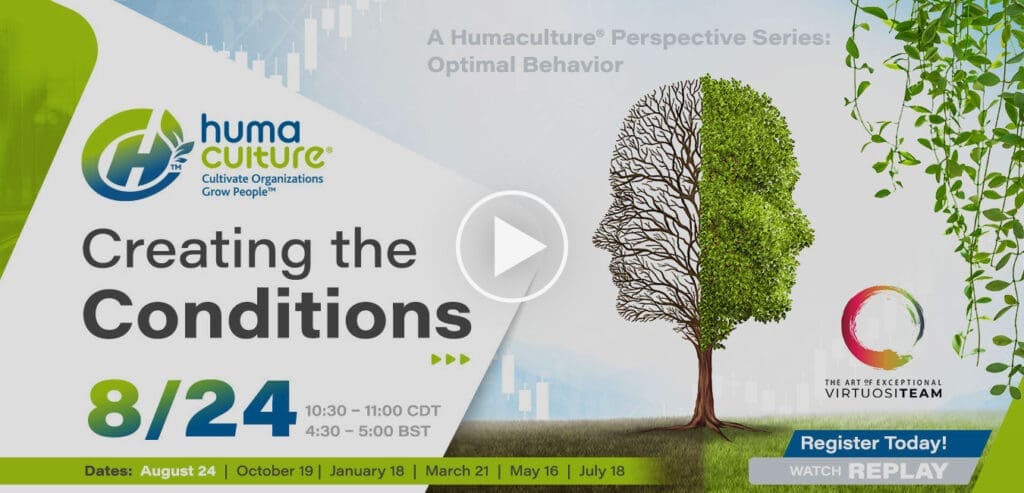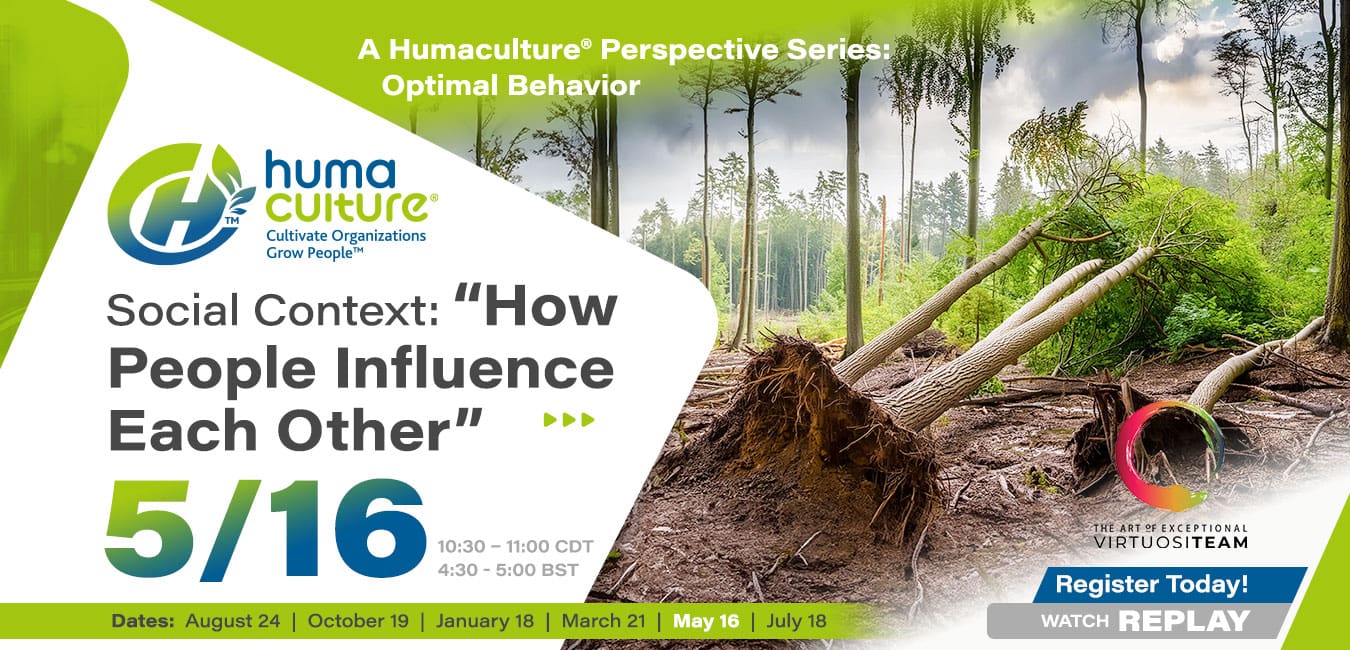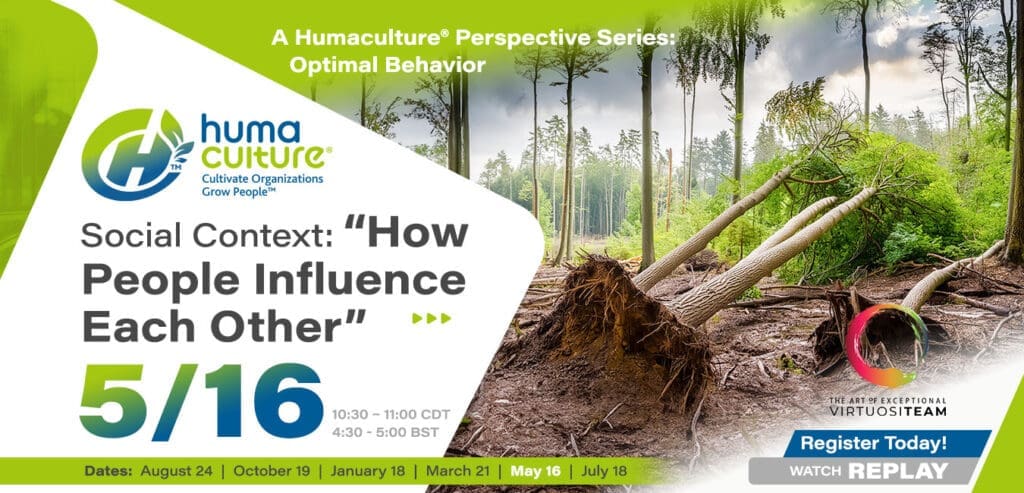Tag: natural choice
Optimal Behaviors: Making Optimal Behavior the Natural Choice

Optimal Behaviors Overview
Watch this webinar series to see how we explore ways organizations can incorporate research-based, practical approaches to create the conditions where Optimal Behaviors are the natural choice. Optimal Behaviors are those that are the most beneficial to the individual as well as the organization.
Horticulturists consider the impact of the conditions in which plants are grown (e.g., climate, soil structure, space and fertility, arrangement, companion planting). Growth and productivity improve when the context of each dimension is appropriately addressed. Expertise from fields like botany and soil sciences provide the successful horticulturist with the information to do their jobs well.
Similarly, Humaculturists® consider the Seven Dimensions of Humaculture® to employ knowledge solidly “rooted” in science for the best results. Behavioral Research Applied Technology Laboratory (BRATLAB), Virtuositeam’s research arm, set out to answer some crucial questions related to understanding changes in behavior and habit creation:
- Which habits really matter, and to what degree, to the three biggest hidden drivers of sustained performance at work, human health, happiness, and security?
- How do we support people to practice these habits in a way that they experience as easy and natural, and that leaves them feeling highly engaged with their employer?
Four Powers Model of Change
The result: the Four Powers Model of Change. This model helps organizations create a thriving culture by leveraging this key distinction: how people THINK they behave and make decisions, versus how they ACTUALLY behave and make decisions. Four Powers is based on behavioral theories and validated research, behavioral research laboratories, and BRATLAB’s own extensive field testing. BRATLAB looked across industries to find the influence techniques that have been successfully used for years to shape employee and customer behavior.
The topics from the series include:
- Introduction: “Creating the Conditions for Optimal Behavior”
- Spaces Context: “Grow a Willow in a Desert? The importance of Spaces”
- Context of the Self: “The Complexity of Each Person”
- Systems Context: “The Systems that Govern Behavior”
- Social Context: “How People Influence Each Other”
- Harvest Time: “Reaping the Fruit of Optimal Behaviors”
Prior Series
- Hidden Opportunities, A Strategic Compliance Series
- People Development: A Humaculture® Perspective Series
Available Support
We are available to support you in your strategy, design, compliance, financial, and monitoring needs. Our team includes experts in organization design, actuarial science, clinical, and legal can guide the process to achieve optimal behavior. Please contact us.
Webinar Replay: Context of the Self: “The Complexity of Each Person”
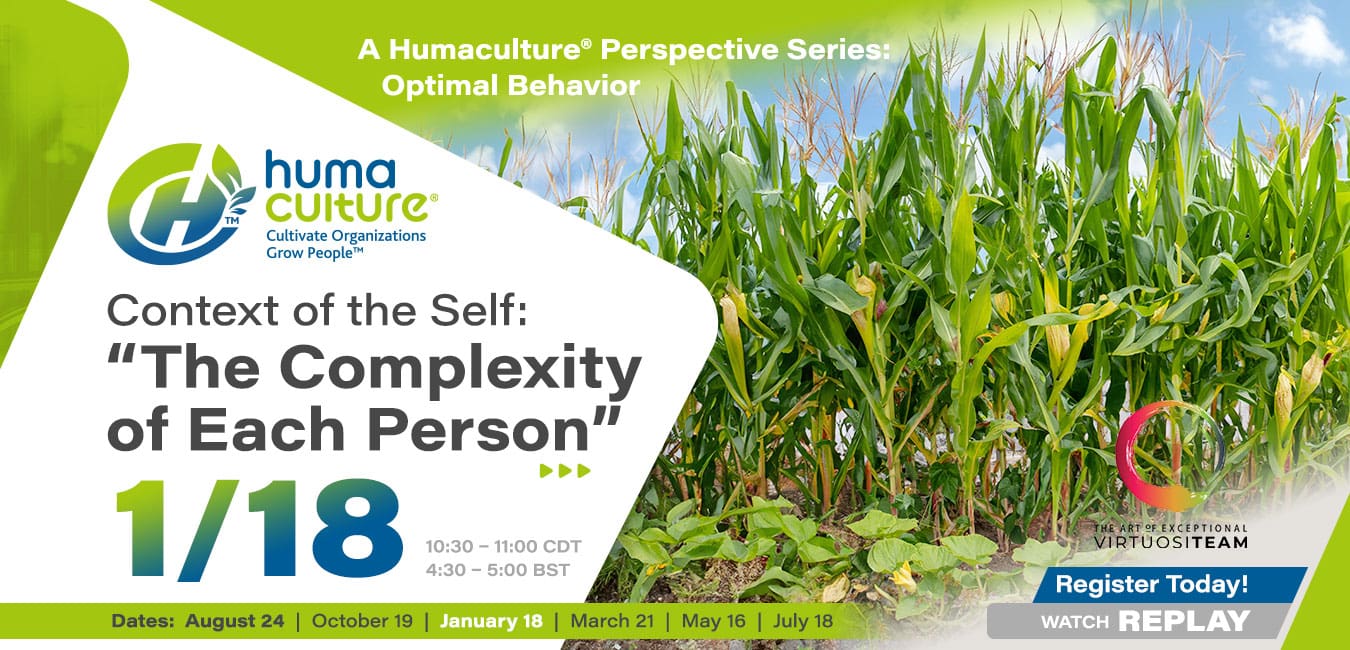
Watch a replay of the third webinar in Humaculture, Inc.’s “Optimal Behavior: Making Optimal Behavior the Natural Choice” to learn why the self can hamper performance and well-being and how to help People to grow capabilities, inspire motivation, overcome barriers, and resist temptations in order to lead to optimal behavior.
Presenters
- Steve Cyboran, ASA, MAAA, FCA, CEBS, actuary and strategy consultant
- Wes Rogers, Humaculturist® and strategy consultant
- Colin Bullen, ASA, behavior change actuary
- Hanlie van Wyk, behavior change consultant
Objective
In this third session in our series on optimal behavior, we explore how the Context of Self influences behavior. To be effective within the Organization, People need to know and manage themselves through their own narrative and understand the same for the People around them. Organizations fail to use narrative stories to connect People to the meaning of changes they are trying to make. Organizations shy away from giving People constructive feedback, yet People need feedback to Grow. Organizations fail to articulate the reason the Organization exists and how People connect with it. To inspire people to perform, Organizational purpose needs to be clear and create emotional attachment, driving motivation. Finally, Organizations associate fun as something that happens outside the workplace and having fun is regarded as unproductive. However, scientists have discovered that it takes approximately 400 repetitions to create a new synapse in the brain, unless it is done in play, in which case it only takes 10 to 20 repetitions.
“The measure of intelligence is the ability to change.” Albert Einstein
Context of Self to Promote Optimal Behavior Key Takeaways
Join us to learn:
- How ineffective organizations:
- Don’t understand how People change behavior
- Don’t Grow Capability and Confidence to change
- Don’t motivate and inspire change
- Don’t recognize how People inhibit sustained behavior change
- How effective organizations:
- Grow competence in change resilience
- Inspire and motivate
- Deploy change sustaining reinforcement tools
Available Support
We are available to support you in your strategy, design, compliance, financial, and monitoring needs. Our team includes business and human relations leaders, finance experts, actuaries, clinicians, behavioral health experts, pharmacy experts, and legal resources to guide you through the strategy and compliance process. Please contact us: [email protected].
Watch
Watch the Career Planning: Effective Pruning Bears Fruit: Manager Development Webinar Replay via Rumble or YouTube.
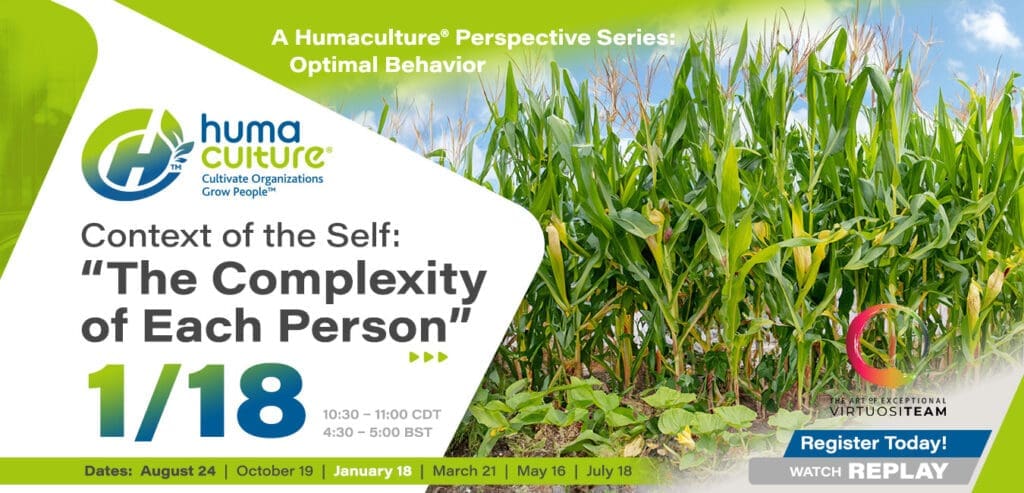
Webinar Replay: Creating the Conditions for Optimal Behavior
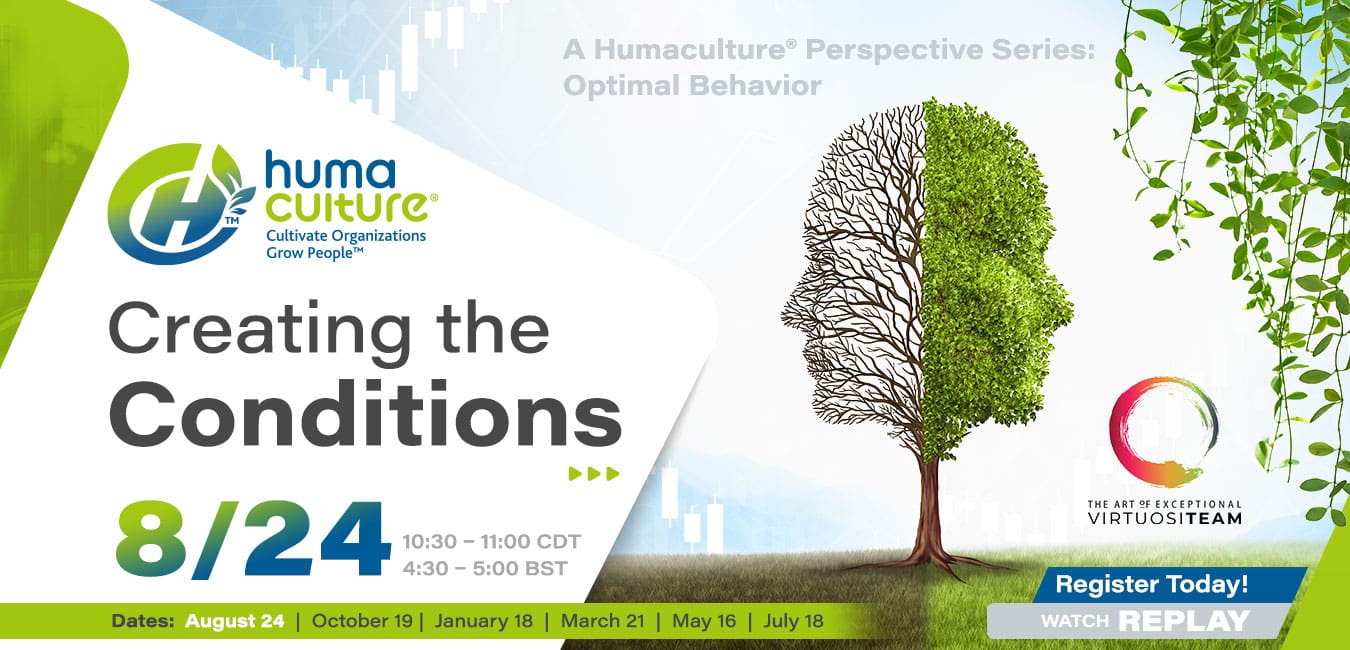
Watch a replay of the first webinar in Humaculture, Inc.’s “Optimal Behavior: Making Optimal Behavior the Natural Choice” to learn why organizations don’t effectively execute change and be introduced to some of the concepts that facilitate optimal behaviors to support a high-performing culture.
Presenters
- Steve Cyboran, ASA, MAAA, FCA, CEBS, actuary and strategy consultant
- Wes Rogers, Humaculturist® and strategy consultant
- Colin Bullen, ASA, behavior change actuary
- Hanlie van Wyk, behavior change consultant
Objective
This is the introductory webinar in our new series on optimal behavior. We explore why people have difficulty in achieving and sustaining change, the difference between short term changes in behavior and long term change through habits, what it takes to achieve optimal behavior in a population, and how to use influence to create a high-performing culture.
Creating the Conditions for Optimal Behavior Key Takeaways
During this session, participants will learn that:
- Why people find it hard to behave optimally
- Why people behave inconsistently
- Why organizations fail to execute change effectively
- How effective organizations:
- Set the contexts to influence behavior
- Understand the powers that influence behavior
- Use influence to create a high-performing culture
Available Support
We are available to support you in your strategy, design, compliance, financial, and monitoring needs. Our team includes business and human relations leaders, finance experts, actuaries, clinicians, behavioral health experts, pharmacy experts, and legal resources to guide you through the strategy and compliance process. Please contact us: [email protected].
Watch
Watch the Career Planning: Effective Pruning Bears Fruit: Manager Development Webinar Replay via Rumble or YouTube.
